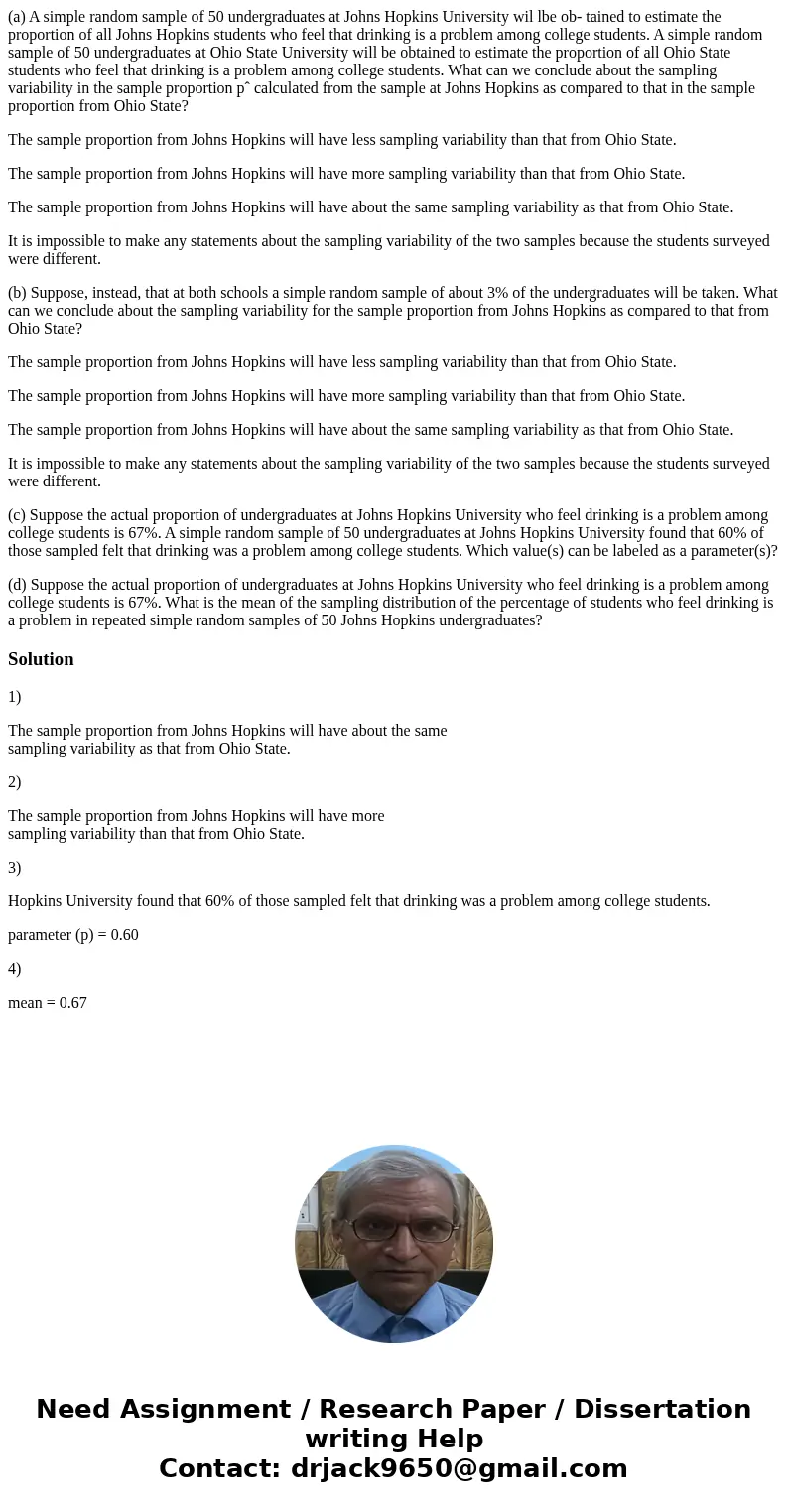a A simple random sample of 50 undergraduates at Johns Hopki
(a) A simple random sample of 50 undergraduates at Johns Hopkins University wil lbe ob- tained to estimate the proportion of all Johns Hopkins students who feel that drinking is a problem among college students. A simple random sample of 50 undergraduates at Ohio State University will be obtained to estimate the proportion of all Ohio State students who feel that drinking is a problem among college students. What can we conclude about the sampling variability in the sample proportion pˆ calculated from the sample at Johns Hopkins as compared to that in the sample proportion from Ohio State?
The sample proportion from Johns Hopkins will have less sampling variability than that from Ohio State.
The sample proportion from Johns Hopkins will have more sampling variability than that from Ohio State.
The sample proportion from Johns Hopkins will have about the same sampling variability as that from Ohio State.
It is impossible to make any statements about the sampling variability of the two samples because the students surveyed were different.
(b) Suppose, instead, that at both schools a simple random sample of about 3% of the undergraduates will be taken. What can we conclude about the sampling variability for the sample proportion from Johns Hopkins as compared to that from Ohio State?
The sample proportion from Johns Hopkins will have less sampling variability than that from Ohio State.
The sample proportion from Johns Hopkins will have more sampling variability than that from Ohio State.
The sample proportion from Johns Hopkins will have about the same sampling variability as that from Ohio State.
It is impossible to make any statements about the sampling variability of the two samples because the students surveyed were different.
(c) Suppose the actual proportion of undergraduates at Johns Hopkins University who feel drinking is a problem among college students is 67%. A simple random sample of 50 undergraduates at Johns Hopkins University found that 60% of those sampled felt that drinking was a problem among college students. Which value(s) can be labeled as a parameter(s)?
(d) Suppose the actual proportion of undergraduates at Johns Hopkins University who feel drinking is a problem among college students is 67%. What is the mean of the sampling distribution of the percentage of students who feel drinking is a problem in repeated simple random samples of 50 Johns Hopkins undergraduates?
Solution
1)
The sample proportion from Johns Hopkins will have about the same
sampling variability as that from Ohio State.
2)
The sample proportion from Johns Hopkins will have more
sampling variability than that from Ohio State.
3)
Hopkins University found that 60% of those sampled felt that drinking was a problem among college students.
parameter (p) = 0.60
4)
mean = 0.67

 Homework Sourse
Homework Sourse